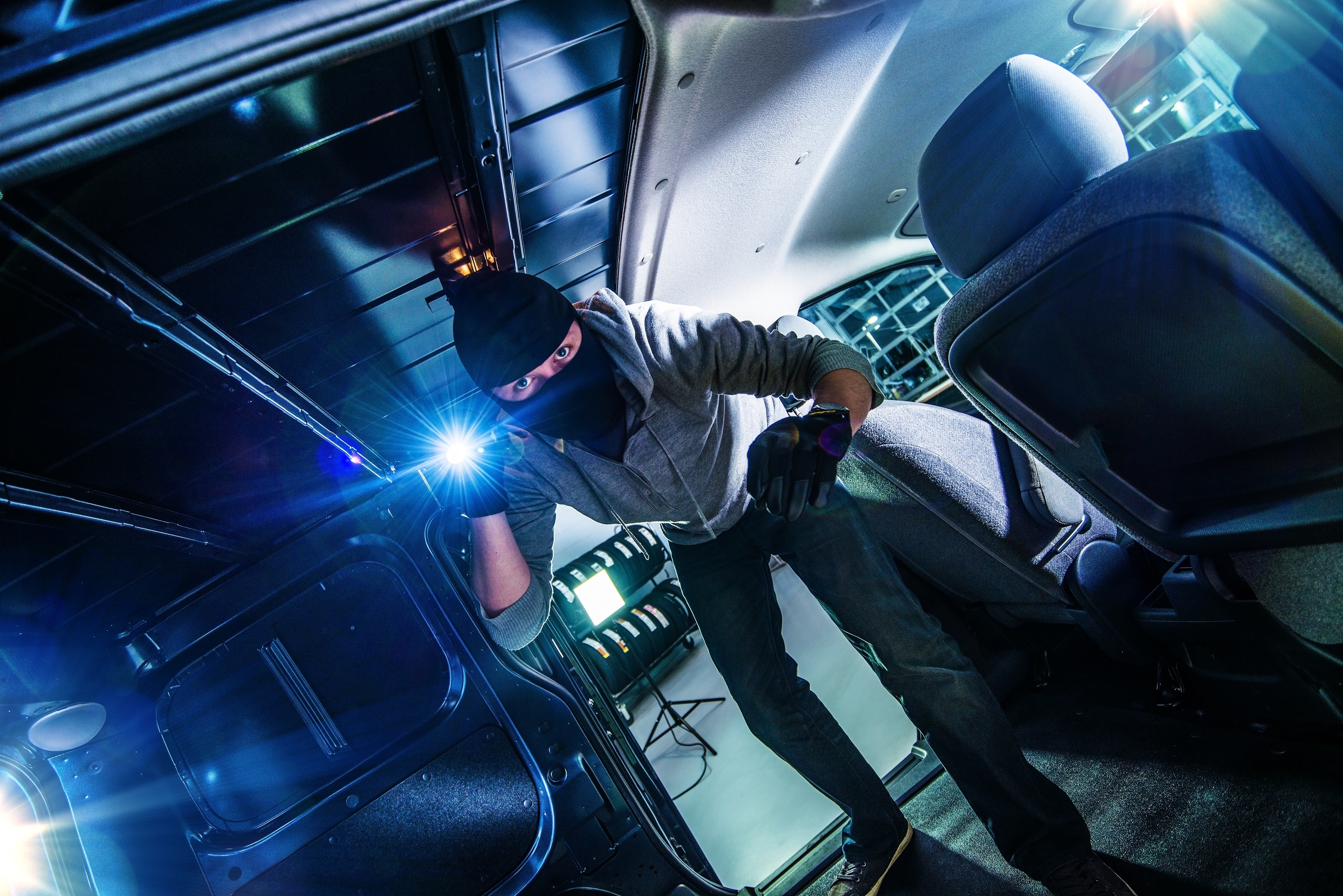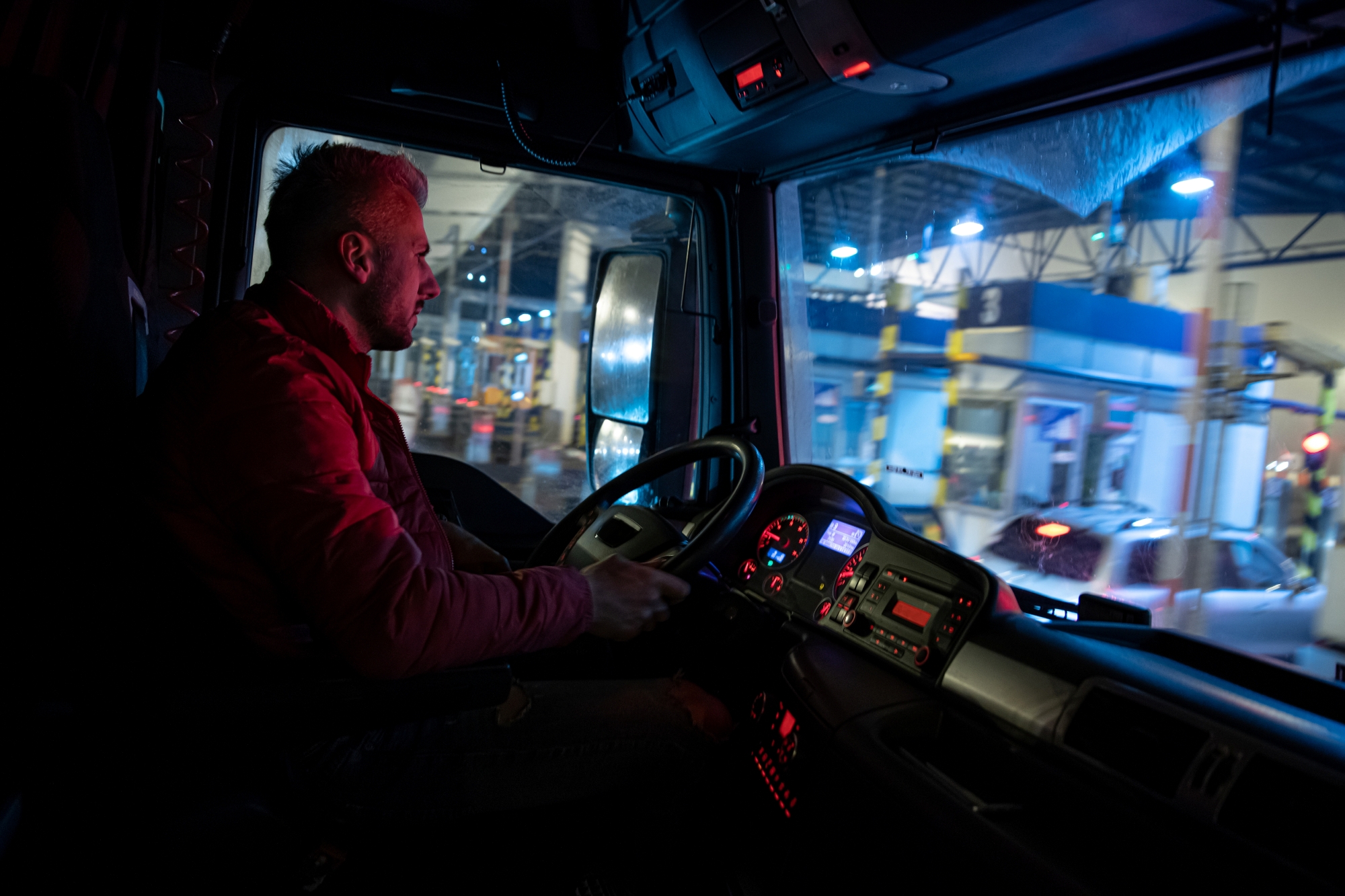
Miranda Blake
Sfaturi pentru a vă menține vehiculul în siguranță: Protejarea camionului împotriva furtului
Creat: 14.11.2024
•
Actualizat: 14.11.2024
Companiile de transport din Regatul Unit și Europa pot reduce semnificativ riscul de furt al vehiculelor și al încărcăturii. Protejarea camionului nu înseamnă doar securizarea vehiculului în sine; aceasta implică o abordare holistică care include tehnologia, formarea, implicarea comunității și planificarea proactivă. Cu măsurile potrivite, managerii de flote pot asigura siguranța șoferilor și integritatea bunurilor, promovând un mediu sigur pentru operațiunile lor.
Ce ar trebui să facă șoferii
Asigurarea vehiculului
Îmbunătățiți securitatea vehiculului dumneavoastră prin utilizarea diferitelor dispozitive, cum ar fi lacăte, sigilii numerotate în mod unic și cordoane de înclinare. Acestea ar trebui aplicate imediat după încărcare pentru a crea un nivel suplimentar de protecție împotriva accesului neautorizat.
Efectuarea de verificări amănunțite este esențială. După fiecare oprire, faceți o pauză pentru a inspecta camionul și încărcătura acestuia. Căutați orice semn de manipulare sau activitate suspectă. Vigilența este esențială în prevenirea incidentelor de furt.
Documentație
Păstrați o listă completă de verificare a securității vehiculelor. Aceasta ar trebui să fie ușor disponibilă pentru a fi examinată de ofițerii poliției de frontieră sau de alte autorități, atunci când este necesar. Acest lucru nu numai că demonstrează angajamentul dumneavoastră, dar ajută și în procesul de investigare în cazul unui furt.
Locații sigure
Optați pentru locurile de parcare care sunt bine iluminate și aglomerate. Zonele cu trafic pietonal intens și camere de supraveghere sunt mai puțin atractive pentru hoți. Ori de câte ori este posibil, folosiți zonele de parcare sigure desemnate, care sunt echipate cu garduri perimetrale și sisteme avansate de supraveghere sau personal de securitate. Aceste locații oferă un nivel suplimentar de siguranță. Pentru parcarea pe timp de noapte, alegeți locuri care sunt iluminate și monitorizate.
Găsiți parcări sigure pentru camioane pe traseul dvs. de transport în comun utilizând [harta SNAP] (https://snapacc.com/map/).

Tehnologie și echipamente
Încorporarea tehnologiei avansate poate spori semnificativ securitatea vehiculului dumneavoastră. Echipați-vă camionul cu sisteme moderne, inclusiv urmărire GPS, imobilizatoare și alarme de panică. Acestea nu numai că descurajează furtul, dar ajută și la recuperare în cazul unui incident.
Planificarea rutelor
În plus, planificarea eficientă a călătoriilor vă poate ajuta să evitați zonele cu risc ridicat. Folosiți un software care vă permite să trasați rutele de livrare, evitând în același timp locurile cunoscute pentru furtul de marfă. Prin punerea în aplicare a tehnologiei telematice și GPS pentru a monitoriza vehiculul în timp real, veți putea să-i urmăriți locația și să vă asigurați de respectarea traseelor planificate.
Ce ar trebui să facă operatorii de flote
Protocoale și sisteme de securitate
Un set bine definit de protocoale de securitate este esențial pentru toți conducătorii auto. În calitate de [operator de flotă] (https://snapacc.com/fleet-operators/), puteți furniza orientări scrise cuprinzătoare care să detalieze măsurile de securitate pe care aceștia trebuie să le respecte. O astfel de abordare asigură că toată lumea este pe aceeași lungime de undă în ceea ce privește practicile de siguranță.
Ar trebui să instruiți șoferii cu privire la modul de utilizare eficientă a sistemelor instalate în camioanele lor. Familiarizarea cu aceste dispozitive le poate spori eficiența. De asemenea, este o idee bună să îi educați cu privire la potențialele amenințări și la importanța vigilenței. Aceștia ar trebui să fie conștienți de tacticile comune folosite de hoți și să știe cum să reacționeze în mod adecvat.
Menținerea camioanelor dvs. în condiții optime reduce riscul de defecțiuni care ar putea duce la furt. Implementați un program proactiv de întreținere pentru a vă asigura că vehiculele dvs. sunt întotdeauna în stare bună de funcționare. Verificările regulate pot preveni defecțiunile mecanice care vă pot face camioanele vulnerabile.
Comunicare și comunitate
Stabilirea unor canale de comunicare clare este vitală pentru gestionarea eficientă a securității. Mențineți o comunicare deschisă între șoferi, dispeceri și personalul de securitate. Acest lucru permite raportarea imediată a oricărei activități suspecte sau probleme legate de vehicule. Încurajați șoferii să se înregistreze periodic pe parcursul turelor lor.
Colaborarea cu comunitatea locală vă poate îmbunătăți măsurile de securitate. Colaborați cu alte întreprinderi și cu autoritățile locale de aplicare a legii pentru a face schimb de informații cu privire la potențialele amenințări. O abordare colectivă poate crește gradul de conștientizare și poate conduce la strategii mai eficiente de prevenire a criminalității. Participați la inițiative comunitare care se concentrează pe acest aspect - construirea de relații poate crea o rețea de sprijin care vă ajută să vă protejați bunurile.
Planuri de răspuns
Existența unui plan solid pentru situații de urgență poate atenua efectele furtului. Elaborați protocoale clare pentru a reacționa la incidente. Acestea ar trebui să includă pașii pentru raportarea acestuia, contactarea forțelor de ordine și notificarea furnizorului de asigurări. Asigurați-vă că toți șoferii sunt familiarizați cu acestea - ei ar trebui să știe cum să acționeze rapid și eficient.
Conștientizarea situației
Instruirea șoferilor pentru a fi conștienți de mediul înconjurător poate preveni furturile. Învățați-i cum să identifice activitățile suspecte din jurul vehiculelor lor și încurajați-i să aibă încredere în instinctul lor și să raporteze orice eveniment neobișnuit. În plus, subliniați importanța de a acorda prioritate siguranței personale în fața încărcăturii. În cazul în care sunt confruntați cu un hoț, aceștia ar trebui să se conformeze și să raporteze incidentul autorităților imediat ce se poate face acest lucru în siguranță.
Monitorizarea tranzacțiilor de combustibil cu SNAP
Oferim un sistem de plată inteligent care înregistrează și urmărește automat tranzacțiile cu combustibil. Atunci când șoferii își alimentează vehiculele la oricare dintre cele peste 3.500 de locații din Regatul Unit, aceștia prezintă pur și simplu cardul SNAP Fuel pentru a plăti tranzacția, ceea ce elimină nevoia de numerar sau carduri de credit, simplificând procesul.
Sistemul adaugă automat fiecare tranzacție de combustibil în contul asociat cu numărul de înmatriculare al vehiculului. O astfel de automatizare elimină necesitatea ca șoferii să colecteze și să prezinte manual chitanțele, reducând sarcina administrativă și potențialul de erori.
Managerii de flotă primesc lunar facturi detaliate care oferă o prezentare detaliată a activității pentru toate vehiculele lor, ceea ce permite monitorizarea ușoară a consumului de combustibil și a cheltuielilor pentru întreaga flotă.
SNAP Fuel se integrează cu alte servicii ale contului SNAP, permițând administratorilor de flote să monitorizeze nu numai tranzacțiile cu combustibil, ci și serviciile de parcare și spălare într-un singur cont, oferind o imagine completă a operațiunilor și cheltuielilor. [Aflați mai multe despre SNAP Fuel aici] (https://snapacc.com/snap-fuel/).



